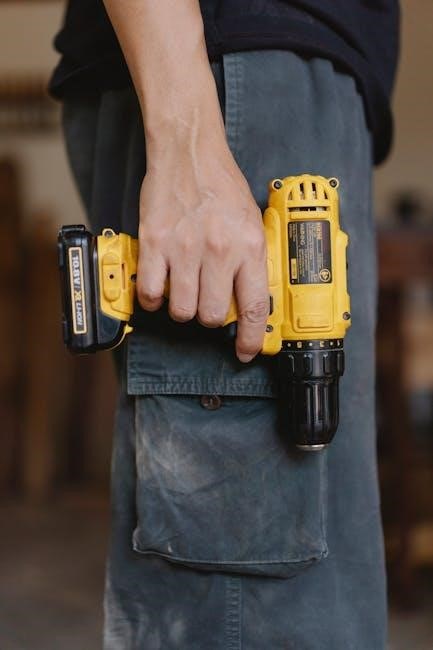The D4120 manual provides detailed installation and maintenance instructions for the System Sensor PERTRONIC Innovair flex D4120 smoke detector, available online as a pdf download file.
Overview of the System Sensor PERTRONIC Innovair flex D4120
The System Sensor PERTRONIC Innovair flex D4120 is a duct smoke detector designed to provide early warning of smoke and fire in air ducts. The D4120 features an extended air speed range, making it suitable for a variety of applications. The device includes a D4S sensor component and a D4P120 power board component, which work together to detect smoke and trigger an alarm. The Innovair flex D4120 is part of a range of smoke detectors from System Sensor, a leading manufacturer of fire detection and alarm systems. The device is designed to be reliable and efficient, with a range of features that make it easy to install and maintain. The D4120 is also compatible with other systems, making it a versatile solution for fire detection and alarm needs. Overall, the D4120 is a high-quality smoke detector that provides effective protection against fire hazards.

Installation Instructions for the D4120 Smoke Detector
Installation requires careful planning and adherence to manufacturer guidelines for optimal performance and safety features.
Component Description, Including D4S Sensor and D4P120 Power Board
The D4120 smoke detector comprises several key components, including the D4S sensor and D4P120 power board, which work in tandem to provide reliable detection and notification of smoke. The D4S sensor is a critical component, utilizing advanced technology to detect smoke particles in the air. The D4P120 power board, on the other hand, provides the necessary power and control functions for the detector. Together, these components enable the D4120 to provide accurate and timely detection of smoke, helping to prevent damage and ensure safety. The components are designed to be highly reliable and durable, with a long lifespan and minimal maintenance requirements. The D4S sensor and D4P120 power board are also designed to be compatible with a range of systems and applications, making the D4120 a versatile and widely applicable smoke detection solution.
Maintenance and Troubleshooting for the D4120 Smoke Alarm
Regular maintenance and troubleshooting are essential for optimal D4120 performance and safety, following guidelines outlined in the manual.
Importance of Regular Maintenance for Optimal Performance
Regular maintenance is crucial for the D4120 smoke alarm to function optimally, ensuring timely detection of potential fires and minimizing false alarms. The manual provides guidelines for maintenance, including cleaning and inspecting the sensor and power board components. By following these guidelines, users can help prevent malfunctions and reduce the risk of undetected fires. Additionally, regular maintenance can help extend the lifespan of the D4120 smoke alarm, reducing the need for frequent replacements. The manual also outlines troubleshooting procedures to help identify and resolve common issues, allowing users to quickly address problems and restore the alarm to working order. Proper maintenance and troubleshooting are essential for ensuring the D4120 smoke alarm operates correctly and provides reliable fire detection. This is critical for protecting people and property from fire hazards. Regular maintenance is essential for optimal performance.

Technical Specifications of the D4120 Smoke Detector
Technical specifications include air speed range and compatibility with other systems and devices for optimal function.
Extended Air Speed Range and Compatibility with Other Systems
The D4120 smoke detector features an extended air speed range, allowing it to function effectively in a variety of environments and applications. This range, combined with its compatibility with other systems and devices, makes it a versatile and reliable choice for smoke detection. The manual provides detailed information on the technical specifications of the D4120, including its air speed range and compatibility, to ensure optimal performance and function. By understanding these specifications, users can ensure that the D4120 is properly installed and maintained to provide effective smoke detection and alarm capabilities. The compatibility of the D4120 with other systems also allows for seamless integration into existing smoke detection and alarm networks, making it a convenient and practical solution. Overall, the extended air speed range and compatibility of the D4120 make it a valuable asset in smoke detection and alarm systems.

Download and Access to the D4120 Manual
The D4120 manual is available for download as a pdf file from the System Sensor website for easy access.
Availability of the Manual on the System Sensor Website
The D4120 manual can be found on the System Sensor website, which provides easy access to the document for users who need to install, maintain, or troubleshoot the smoke detector. The website offers a convenient way to download the manual in pdf format, allowing users to print or save the document for future reference. The manual is available for download at no cost, and users can access it from anywhere with an internet connection. The System Sensor website is a reliable source for obtaining the D4120 manual, and it is regularly updated to ensure that users have access to the most current information. By visiting the website, users can quickly and easily obtain the manual and get the information they need to work with the D4120 smoke detector. The website is user-friendly and easy to navigate.

Compliance with NFPA Standards 72 and 90A
The D4120 smoke detector complies with NFPA standards for safety and performance, ensuring reliable operation and protection.
Relevance of the Standards to the D4120 Smoke Detector Installation and Maintenance
The NFPA standards 72 and 90A play a crucial role in ensuring the D4120 smoke detector is installed and maintained correctly, providing a safe and reliable means of detecting smoke in air ducts. The standards outline specific requirements for the installation, testing, and maintenance of smoke detectors, including the D4120 model. By following these standards, users can ensure their D4120 smoke detector is functioning properly and providing adequate protection. The standards also provide guidelines for the inspection and testing of smoke detectors, helping to identify potential issues before they become major problems. Overall, compliance with NFPA standards 72 and 90A is essential for the safe and effective operation of the D4120 smoke detector. This ensures the detector is installed and maintained in accordance with industry best practices.
